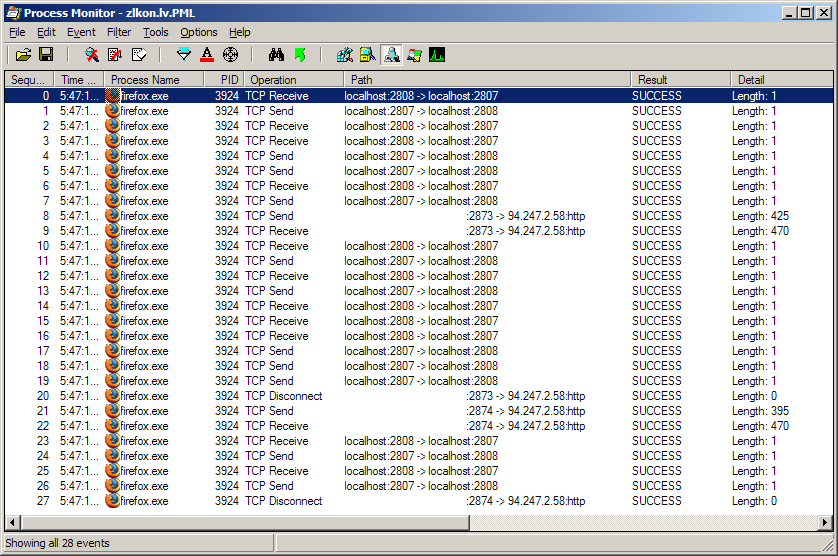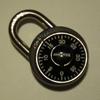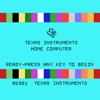Earlier this week I noticed that Google searches on my Windows XP box were coming up with bizarre results. I'd type something in to Google and my search results would come up with headings and descriptions that looked correct but linked to bogus sites. At first I thought that this was some kind of search engine optimization gone awry. Two things changed my mind:
- I noticed my web browser accessing a bogus URL: http://1.2.3.0
- I checked my other machines (all running Linux) and they all worked correctly.
I opened up a Cygwin bash prompt and tried to ping 1.2.3.0, thinking that perhaps this was redirecting elsewhere - nothing turned up. On the other hand, if I launched Firefox and typed in that URL, it would connect to a server and retrieve some JavaScript. At this point I was convinced that this redirection was localized to my Firefox process.
I decided that whatever was causing this could have a varying degree of sophistication. Going for the low-hanging fruit seemed to be the most obvious course of action. I fired up Process Monitor from Sysinternals and logged everything that happened in the system as I entered "http://1.2.3.0" in the Firefox address bar. Here's what I found:

Notice the TCP transmissions to 94.247.2.58 port 80 (HTTP). Something is definitely phoning home. A quick run of the ping command with reverse DNS lookup gave me a successful hit of hs.2-58.zlkon.lv.
Rather than continuing with a fine-grained investigation, it was time to let my fingers do the walking. I had already disabled (though not yet eradicated) this malware, and at this point I had something to search on. Google promptly returned these juicy nuggets:
Beware of sysaudio.sys!
Fake sysaudio.sys causes search engine hijack
It looks like whatever put this on my machine was using some kind of unpatched browser exploit. Anyway, those blog posts point out that c:\windows\system32\sysaudio.sys is the likely culprit. Sure enough, I found it on my machine.
I decided to take a look to see if I could obtain some more information from this binary without doing any disassembly. I ran the strings command and got some interesting results. I won't include them all here, but I will note that they were all reversed in the binary. For example, one line in the strings output was:
:tnegA-resU
Look familiar? Reverse the string and think HTTP. ;)
Among other things, there are HTML script tags embedded in the binary, as well as parts of a URL that look like they are eventually spliced together. There's also a line containing the string "ntnet.drv", so that looks like another file that might be involved.
Here's the MD5 checksum for sysaudio.sys: db8c035980bf8cd18953e3f3f0abfe7e
By quarantining the files and fixing the registry key as mentioned in those blog references, it appears that this piece of malware has been eliminated. Despite the fact that I was happy (and intrigued) to track this issue down, I am kicking myself in the ass for allowing this to happen in the first place. On Windows I tend to run as an Administrator because of so many shitbox apps out there that can't handle a low-privileged user. I usually use Michael Howard's DropMyRights utility to ensure that stuff like this can't happen. I don't know why I wasn't using it on Firefox... perhaps my modified shortcut got overwritten during an upgrade?
UPDATE January 9, 2009: I submitted this malware sample to a number of anti-virus vendors, and some of them needed to add it to their databases. It appears that a slightly different version has been floating around as of late, this time under the guise of c:\windows\system32\wdmaud.sys and accessing http://7.7.7.0 instead of http://1.2.3.0.



7 comments:
Thank you so much for sharing this info!! I had the same problem and your steps resolved it.
Thanks... I picked up the first variant a few weeks ago and was able to remove it with the information posted on Miekiemoes blog- then I managed to pick up the 2nd variant twice this week. The second time I picked up the wdmaud.sys file, the description in it's file properties read "Miekiemoes Rules". I stopped by Miekiemoe's blog to post and ask her if she was aware of this, and let her know I took a screen shot of it. Tonight I went back to see if she had replied, and my message had been removed. That's a little peculiar, don't you think?
Lillen: since it appears that you are continuously picking up this malware, you might want to make sure that your system is fully patched. Run Windows Update and also make sure that whatever web browser you are using is fully updated. You probably want to make sure that your virus scanner is up to date as well.
Finally, take a good look at which websites you've been visiting - you're obviously repeatedly picking up this malware from somewhere. Sticking with more reputable websites will likely reduce your chances of running into this problem again.
Yup, I'm patched to the hilt and have updated everything. I manually blocked some suspected addresses, and even went as far as to uninstall Adobe Reader, since I came across a few discussions that think it may be the culprit for getting the file in.
I usually don't stray too far off the beaten path when browsing, but I'm watching to see if I'll pick it up again. I still don't know what to make of the file description from the 2nd time around.
Amendment to my first post - Apparently my post on Miekiemoe's blog about the file description was NOT deleted, as I just checked and she has replied. My post must have been waiting to be approved, and I inadvertently thought it had posted. My apologies for the misinformation.
Thank you for the help. I just fixed this issue on my system.
Surprised that after at least a month, I still got it and AVG didn't and still doesn't detect it.
I submitted a sample to AVG today. Their reply says that it should be added to their next update.
Post a Comment